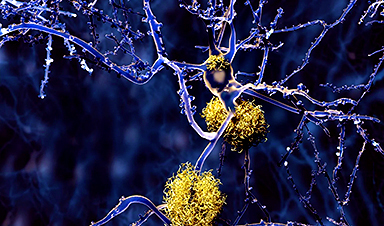In 2017, I sat down to read a book entitled, A Crack in Creation: Gene Editing and the Unthinkable Power to Control Evolution. Written by Jennifer Doudna it described a new tool called CRISPR that could edit DNA. Doudna first published a description of this gene editing tool in the journal Science in 2012. I wrote about CRISPR in 2017 and then again following the progress being made using it and the evolution of its tool capabilities as researchers in laboratories around the world discovered novel ways to use it.
In 2019, CRISPR started moving out of university research laboratories and into the world of medical clinical trials. In one case it was used to edit the DNA of T-cells by removing a gene and replacing it with one to attack sarcomas and multiple myelomas. A similar editing experiment replaced a gene in people suffering from beta-thalassemia, a genetic blood disorder. And in another trial, CRISPR-modified bone marrow stem cells were used to eliminate sickle cell anemia.
Among the Massachusetts Institute of Technology’s 10 technology breakthroughs in 2023, CRISPR made the list. Why? Because MIT sees CRISPR’s days in clinical trials around rare diseases coming to an end. The CRISPR of today, eleven years after it first came on the scene, is no longer just a slice-and-dice tool.
CRISPR Going Mainstream
CRISPR is being used by a company, Verve Therapeutics, today, to alter genetic code associated with high cholesterol that is treated using drugs called statins.
I take statins once a day because my cholesterol levels are slightly higher than normal. I remember when it was first prescribed, the doctor said the city should be putting statins in the drinking water just like fluoride because high cholesterol was a huge problem here in North America.
Cholesterol comes in two forms, one good, the other bad. Our bodies need good cholesterol because it is essential to cells. But too much of the bad kind can clog arteries and lead to strokes and heart attacks.
According to the U.S. Centers for Disease Control (CDC), more than half of American adults are on prescribed statins to reduce cholesterol levels. That number isn’t too far different in Canada. But there are problems with being on statins forever. Blood levels have to be checked periodically to ensure the doses are right and cholesterol levels are within the normal range. Statins also have side effects. For instance, when I first started on a statin I had horrific backaches. A pharmacist recommended I take a supplement, CoQ10, with the statin and the problem has never reoccurred.
Genetic Vaccines in Our Future
What Verve is offering instead of a statin, is the first genetic vaccine on the market, a one-time fix to permanently lower bad cholesterol levels. To understand how a genetic vaccine works here is a quick refresher on DNA. It is a complex molecule containing four nucleotides, also called nucleobases. They go by the names adenine, guanine, cytosine and thymine. These are the biological building blocks for life on Earth.
What Verve has done is use CRISPR to edit a single nucleobase within our DNA for PCSK9, a gene expressed in the liver. PCSK9 encodes a protein that regulates the amount of cholesterol in blood plasma. Delivered as a vaccine Verve has shown the treatment lowers blood cholesterol levels by as much as 70% and keeps it down permanently. Limited human testing has shown excellent results. Larger clinical trials are coming up.
From Verve’s curing high cholesterol to the use of CRISPR for genetic vaccines to cure other diseases is not too far in the future. A CRISPR-derived genetic vaccine could lead to a cure for diabetes, high blood pressure, and even Alzheimer’s.
CRISPR for the masses can be revolutionary. It has enormous ramifications for humanity with genetic vaccinations replacing many prescription drugs. And a genetic vaccination will only need to be administered once providing a permanent fix.
Those who see this as us playing God will likely react negatively to this medical breakthrough. I suspect the anti-vaxxers will be out with pitchforks in hand ready to march. And on the Internet conspiracy theorists will spread fear and misinformation about CRISPR and the evil intent of a medical cabal out to take over the world and turn us into zombies. For those who fit into these categories, the option of the prescription pills we have today will still remain.
News
Baffling Scientists for Centuries: New Study Unravels Mystery of Static Electricity
ISTA physicists demonstrate that contact electrification depends on the contact history of materials. For centuries, static electricity has intrigued and perplexed scientists. Now, researchers from the Waitukaitis group at the Institute of Science and [...]
Tumor “Stickiness” – Scientists Develop Potential New Way To Predict Cancer’s Spread
UC San Diego researchers have developed a device that predicts breast cancer aggressiveness by measuring tumor cell adhesion. Weakly adherent cells indicate a higher risk of metastasis, especially in early-stage DCIS. This innovation could [...]
Scientists Just Watched Atoms Move for the First Time Using AI
Scientists have developed a groundbreaking AI-driven technique that reveals the hidden movements of nanoparticles, essential in materials science, pharmaceuticals, and electronics. By integrating artificial intelligence with electron microscopy, researchers can now visualize atomic-level changes that were [...]
Scientists Sound Alarm: “Safe” Antibiotic Has Led to an Almost Untreatable Superbug
A recent study reveals that an antibiotic used for liver disease patients may increase their risk of contracting a dangerous superbug. An international team of researchers has discovered that rifaximin, a commonly prescribed antibiotic [...]
Scientists Discover Natural Compound That Stops Cancer Progression
A discovery led by OHSU was made possible by years of study conducted by University of Portland undergraduates. Scientists have discovered a natural compound that can halt a key process involved in the progression [...]
Scientists Just Discovered an RNA That Repairs DNA Damage – And It’s a Game-Changer
Our DNA is constantly under threat — from cell division errors to external factors like sunlight and smoking. Fortunately, cells have intricate repair mechanisms to counteract this damage. Scientists have uncovered a surprising role played by [...]
What Scientists Just Discovered About COVID-19’s Hidden Death Toll
COVID-19 didn’t just claim lives directly—it reshaped mortality patterns worldwide. A major international study found that life expectancy plummeted across most of the 24 analyzed countries, with additional deaths from cardiovascular disease, substance abuse, and mental [...]
Self-Propelled Nanoparticles Improve Immunotherapy for Non-Invasive Bladder Cancer
A study led by Pohang University of Science and Technology (POSTECH) and the Institute for Bioengineering of Catalonia (IBEC) in South Korea details the creation of urea-powered nanomotors that enhance immunotherapy for bladder cancer. The nanomotors [...]
Scientists Develop New System That Produces Drinking Water From Thin Air
UT Austin researchers have developed a biodegradable, biomass-based hydrogel that efficiently extracts drinkable water from the air, offering a scalable, sustainable solution for water access in off-grid communities, emergency relief, and agriculture. Discarded food [...]
AI Unveils Hidden Nanoparticles – A Breakthrough in Early Disease Detection
Deep Nanometry (DNM) is an innovative technique combining high-speed optical detection with AI-driven noise reduction, allowing researchers to find rare nanoparticles like extracellular vesicles (EVs). Since EVs play a role in disease detection, DNM [...]
Inhalable nanoparticles could help treat chronic lung disease
Nanoparticles designed to release antibiotics deep inside the lungs reduced inflammation and improved lung function in mice with symptoms of chronic obstructive pulmonary disease By Grace Wade Delivering medication to the lungs with inhalable nanoparticles [...]
New MRI Study Uncovers Hidden Lung Abnormalities in Children With Long COVID
Long COVID is more than just lingering symptoms—it may have a hidden biological basis that standard medical tests fail to detect. A groundbreaking study using advanced MRI technology has uncovered significant lung abnormalities in [...]
AI Struggles with Abstract Thought: Study Reveals GPT-4’s Limits
While GPT-4 performs well in structured reasoning tasks, a new study shows that its ability to adapt to variations is weak—suggesting AI still lacks true abstract understanding and flexibility in decision-making. Artificial Intelligence (AI), [...]
Turning Off Nerve Signals: Scientists Develop Promising New Pancreatic Cancer Treatment
Pancreatic cancer reprograms nerve cells to fuel its growth, but blocking these connections can shrink tumors and boost treatment effectiveness. Pancreatic cancer is closely linked to the nervous system, according to researchers from the [...]
New human antibody shows promise for Ebola virus treatment
New research led by scientists at La Jolla Institute for Immunology (LJI) reveals the workings of a human antibody called mAb 3A6, which may prove to be an important component for Ebola virus therapeutics. [...]
Early Alzheimer’s Detection Test – Years Before Symptoms Appear
A new biomarker test can detect early-stage tau protein clumping up to a decade before it appears on brain scans, improving early Alzheimer’s diagnosis. Unlike amyloid-beta, tau neurofibrillary tangles are directly linked to cognitive decline. Years [...]






















